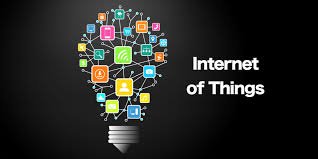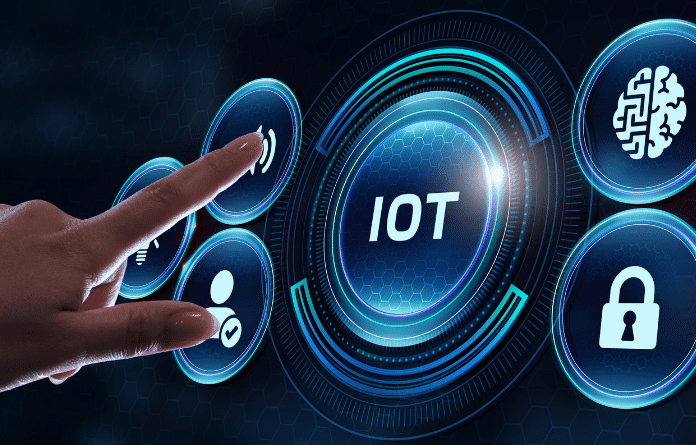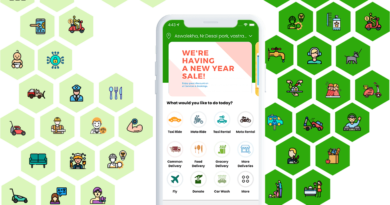The Internet of Things (IoT): Revolutionizing Connectivity and Automation
The Internet of Things (IoT) is transforming the way we interact with technology, creating a seamlessly connected world where devices communicate with each other to provide enhanced convenience, efficiency, and functionality.
IoT encompasses a wide range of applications, from smart homes and healthcare to industrial automation and smart cities. This article explores the concept of IoT, its components, applications, challenges, and future prospects.
What is the Internet of Things (IoT)?

The Internet of Things refers to the network of physical objects—”things”—embedded with sensors, software, and other technologies to connect and exchange data with other devices and systems over the internet. These “things” can range from ordinary household items to sophisticated industrial tools.
Components of IoT:
- Devices/Sensors: These are the physical objects that collect data. They can be anything from temperature sensors and heart rate monitors to GPS devices and smart thermostats.
- Connectivity: Devices need a network to communicate. This can be through Wi-Fi, Bluetooth, cellular networks, or specialized IoT networks like LoRaWAN.
- Data Processing: The data collected by devices is processed either locally (edge computing) or in the cloud to extract meaningful information.
- User Interface: The final component where users interact with the system, usually through apps or web dashboards.
Applications of IoT
1. Smart Homes
- Devices: Smart thermostats, lighting systems, security cameras, and home assistants.
- Benefits: Enhanced convenience, energy efficiency, and security. For instance, smart thermostats can learn user preferences and adjust temperatures automatically to save energy.
2. Healthcare
- Devices: Wearable fitness trackers, remote monitoring devices, and smart medication dispensers.
- Benefits: Improved patient care and management, real-time health monitoring, and reduced hospital visits. For example, wearable devices can monitor vital signs and alert doctors in case of anomalies.
3. Industrial IoT (IIoT)
- Devices: Predictive maintenance sensors, automated machinery, and supply chain management tools.
- Benefits: Increased operational efficiency, reduced downtime, and enhanced safety. Predictive maintenance sensors can foresee equipment failures, allowing timely interventions.
4. Smart Cities
- Devices: Traffic sensors, smart streetlights, waste management systems, and environmental monitoring.
- Benefits: Improved urban living conditions, efficient resource management, and reduced environmental impact. Smart traffic systems can optimize traffic flow, reducing congestion and pollution.
5. Agriculture
- Devices: Soil moisture sensors, weather stations, and automated irrigation systems.
- Benefits: Enhanced crop yields, efficient water usage, and reduced labor. Automated irrigation systems can water crops based on real-time soil moisture data.
Challenges of IoT

1. Security and Privacy
- Issue: IoT devices can be vulnerable to cyberattacks, leading to data breaches and unauthorized access.
- Solution: Implement robust security protocols, encryption, and regular firmware updates to protect devices and data.
2. Interoperability
- Issue: Different IoT devices and platforms often lack standardization, making integration challenging.
- Solution: Develop and adopt universal standards and protocols to ensure seamless communication between devices.
3. Data Management
- Issue: The vast amount of data generated by IoT devices can be overwhelming and difficult to manage.
- Solution: Utilize advanced data analytics and cloud computing to process and analyze data efficiently.
4. Power Consumption
- Issue: Many IoT devices are battery-powered, and frequent replacements can be impractical.
- Solution: Innovate low-power consumption technologies and energy-efficient designs.
Future Prospects

1. 5G Integration
- The advent of 5G technology promises faster, more reliable connectivity for IoT devices, enabling real-time data transmission and enhanced device performance.
2. Artificial Intelligence and Machine Learning
- Integrating AI and machine learning with IoT can lead to smarter, self-learning systems that can predict user needs, optimize operations, and provide personalized experiences.
3. Edge Computing
- Processing data closer to the source (on the edge) rather than relying solely on cloud computing can reduce latency, improve response times, and enhance data security.
4. Expanding IoT Ecosystem
- As IoT technology evolves, its application will expand into new sectors such as autonomous vehicles, augmented reality, and smart retail, further revolutionizing how we interact with the world.
Conclusion
The Internet of Things is revolutionizing various aspects of our lives, from home automation and healthcare to industrial processes and urban infrastructure.

Despite its challenges, the potential of IoT to create a more connected, efficient, and intelligent world is immense. As technology advances, the integration of IoT with emerging technologies like 5G, AI, and edge computing will unlock new possibilities and drive innovation across industries.




